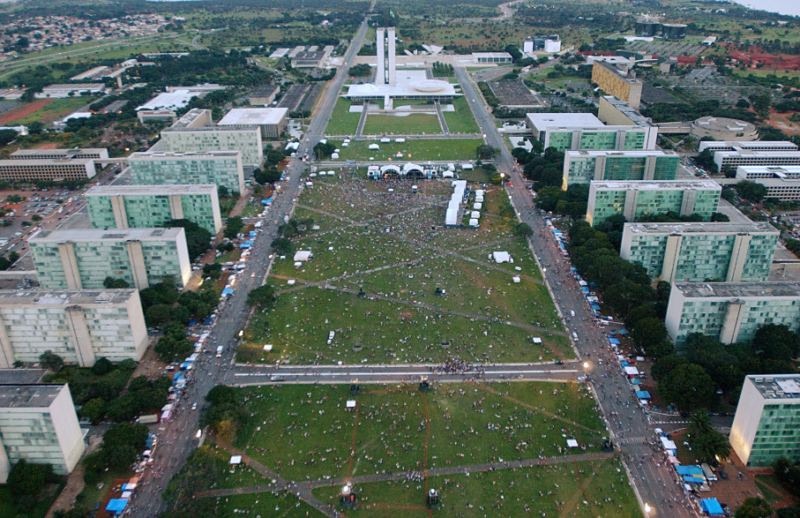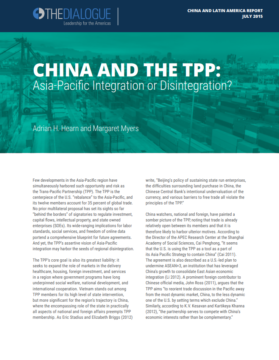The FTA, Not Such a Happy Story
Someday, someone will write the objective history of the US-Colombia free trade agreement For the US, the history is not a happy one.
Over the last two decades, Brazil’s trade policy has centered on two main negotiations. At the regional level, Brasília has spent much of its time and effort trying to lay the groundwork for a common economic space in the Southern Cone of South America. Since 1991, Mercosur, the Common Market of the South, has been the centerpiece of that strategy. At the multilateral level, the focus has been on the World Trade Organization (WTO) and its rounds of negotiations to liberalize trade. Since the turn of the century, Brazil has been one of the main supporters of the Doha Round as it tries to reach an agreement with more balance between developed and emerging economies.
Progress on both fronts, however, has been limited. Disputes within the South American bloc continue or even escalate as member countries deviate from the process of building a common market. Since its inception, Mercosur has been bogged down by “temporary” exceptions to the free trade regime and customs union rules. The plan to expand the bloc’s borders has gained a more salient political dimension but, increasingly, to the detriment of economic requirements. At the WTO, meanwhile, persistent disagreements between developed and emerging economies—mainly regarding agricultural trade, manufacturing tariffs, and intellectual property—have all but halted the Doha Round, which saw no major overtures between 2008 and 2013.
If internal problems weren’t enough, Brazil’s trade-related objectives will likely confront stronger headwinds from the global economy. In a context where there is advancement of incipient US-led global trade negotiations like the Trans-Pacific Partnership (TPP) and the Transatlantic Trade and Investment Partnership (TTIP) between the United States and the European Union, both Mercosur and the WTO tend to feel an impact. The success of these two potentially transformative trade arrangements will greatly depend on the Obama administration’s ability to push negotiations. Nonetheless, talks on TPP and TTIP promise to dominate the global trade landscape over the next two years, obfuscating or even undermining Brazil’s trade policy priorities.
While it is safe to say that Brazil is entering a less promising phase under current forecasts for global and domestic economic growth, the country’s political and economic structures are nowhere near the brink of collapse.
To understand how policymakers in Brasília will respond to these challenges, one needs to understand the drivers of Brazil’s trade policy in recent years. It is also important to have a comprehensive view of how trade policy ties into the government’s broader economic policy goals. Brazilian leaders’ perceptions about trade are largely determined (or limited) by a broader political and economic context.
The overarching hypothesis when it comes to economic policymaking in Brazil, and this premise includes trade policy, is that when economic and political restrictions become more salient, the government tends to respond in a more constructive fashion. Global economic expansion, powered mainly by a boom in commodities and Chinese growth, provided the conditions for sustainable growth in Brazil during much of the last decade. This growth cycle led to a material increase in the standards of living and a broadened middle class. A political by-product of that growth cycle was years of strong presidential popularity, especially during President Luiz Inácio Lula da Silva’s second term (2007–2010) and President Dilma Rousseff’s first two years in office (2011–2013).
The economic super-cycle and the political super-cycle combined to generate incentives for complacency. A number of structural reforms were left on the back burner while the government increased its presence in some sectors of the economy. But now that the winds of the global economy have shifted, Brazil’s economic expansion has slowed down, and Rousseff’s approval ratings have dropped to more “normal” levels following widespread protests in June, complacency may to give way to more constructive and proactive policies, albeit incrementally and not always consistently.
While Brazil’s proclivity toward protectionism is expected to unwind, it probably will not be redirected toward free trade.
Under different administrations over at least the last two decades, the quality of policymaking has tended to improve when Brazil is faced with a harsher economic environment. (This is not an immediate or even a perfectly direct correlation; this process tends to be incremental and vary from sector to sector.) While it is safe to say that Brazil is entering a less promising phase under current forecasts for global and domestic economic growth, the country’s political and economic structures are nowhere near the brink of collapse. Therefore, it is vital to put into perspective the current situation, especially given the country’s history of political and economic upheavals.
How will Brazil’s trade policy be influenced over the remainder of President Rousseff’s term and beyond? A deteriorating economic environment will combine with emerging trade initiatives to expose the vulnerabilities of the country’s current trade policy. As a result, adjustments are likely, although no paradigm shift is expected. In other words, while Brazil’s proclivity toward protectionism is expected to unwind, it probably will not be redirected toward free trade. Any change, however positive, is more likely to be incremental. In addition, while next year’s presidential election may help spur debate on Brazil’s trade policy agenda, it may also punt more meaningful changes until a new administration takes office in 2015.
Someday, someone will write the objective history of the US-Colombia free trade agreement For the US, the history is not a happy one.
How significant of a priority should strengthening NAFTA be as compared to other trade agreements?
Will the TPP and RCEP be promoting of greater integration or of disintegration in the Asia-Pacific region?
 Fabio Rodrigues / Agência Brasil / CC BY 3.0 BR
Fabio Rodrigues / Agência Brasil / CC BY 3.0 BR

